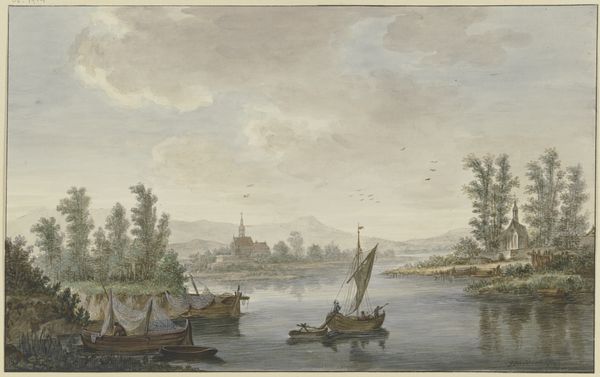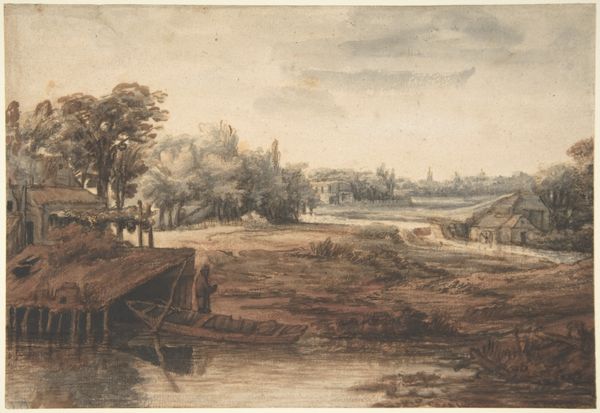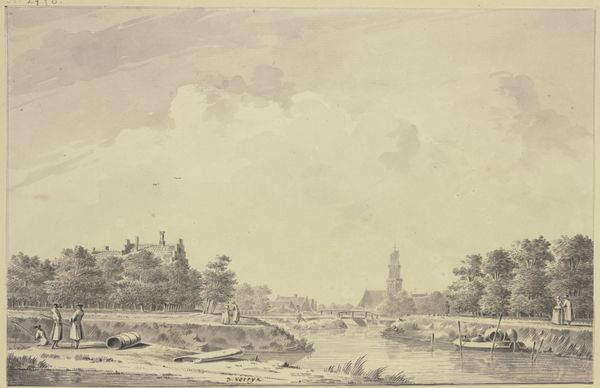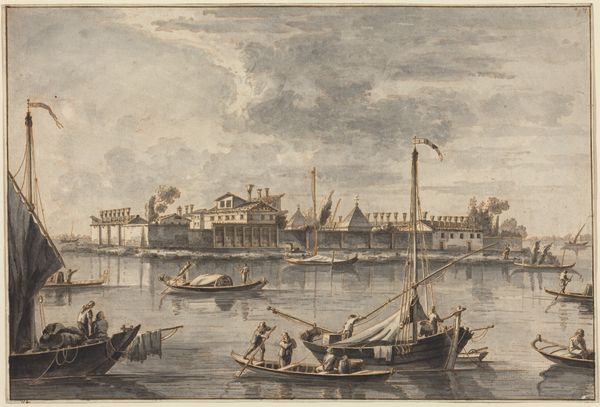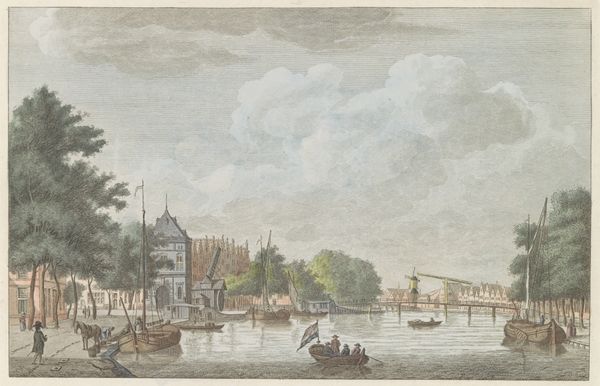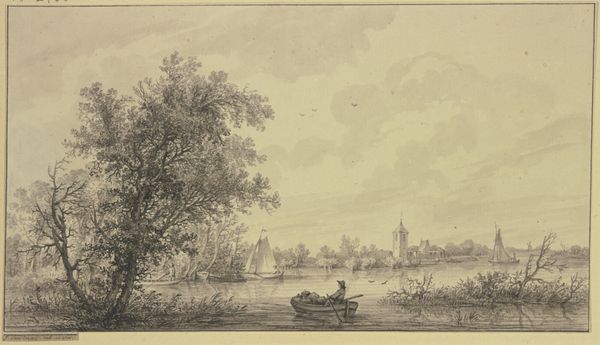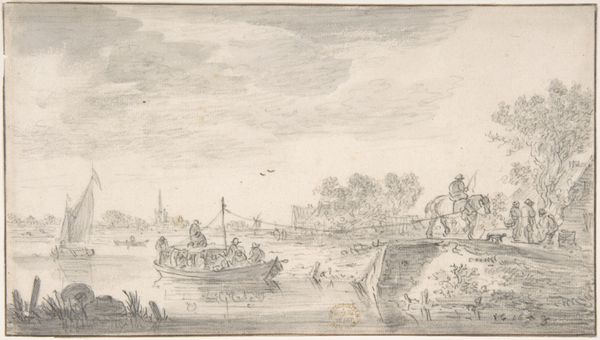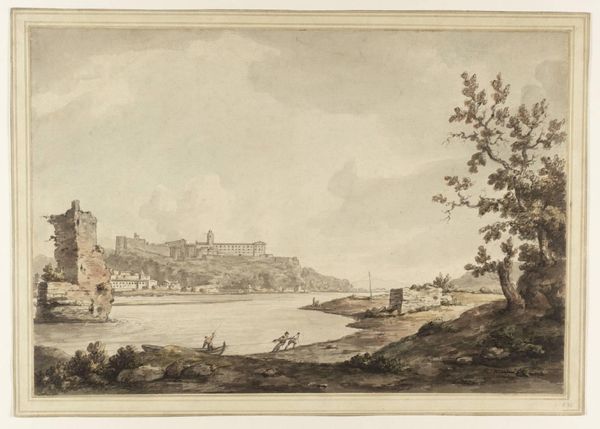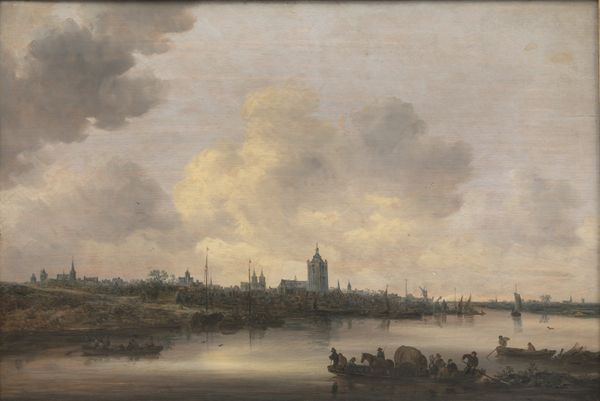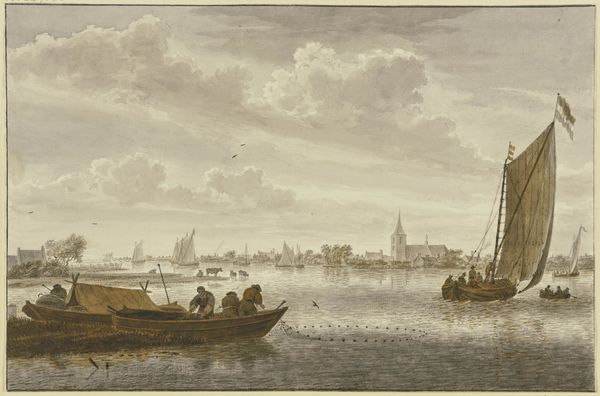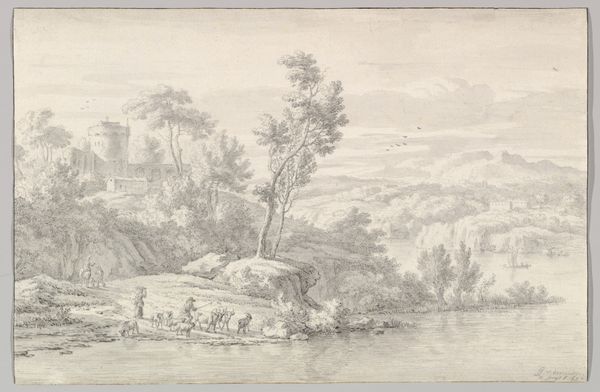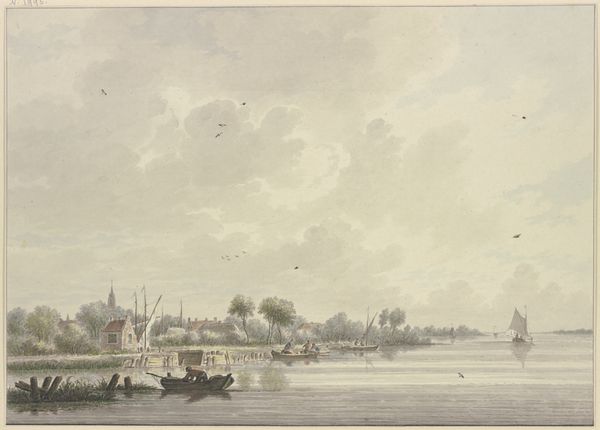
drawing, watercolor, ink
#
drawing
#
landscape
#
watercolor
#
ink
#
romanticism
Copyright: Public Domain
Curator: Before us, we have Georg Melchior Kraus's "River Landscape," created between 1800 and 1806. This work, housed in the Städel Museum, utilizes ink and watercolor in a drawing format to capture a sweeping scene. Editor: The pervasive grayness gives it an austere, almost melancholic air. The composition directs your eye from the foreground figures towards the faint, receding buildings. Curator: Note the layering—Kraus masterfully utilizes washes of color. The thinness of the ink and watercolor creates subtle tonal variations. Look at the paper itself. Do you think its fibers influenced how the pigments settled, enhancing the sense of depth? Editor: I'm immediately drawn to the presence of labor here. The figures in the boats, seemingly engaged in work, suggest an active engagement with the landscape rather than a purely picturesque view. It feels like less about untouched nature and more about human intervention, subsistence even. The materials employed—ink, watercolor, paper—were all relatively accessible, pointing to a particular type of artistic production. Were these works intended for public consumption, or for private reflection? Curator: Kraus likely intended the image to represent a moment. See the layering, the specific rendering of light—an embrace of the transient qualities, perfectly characteristic of the burgeoning Romantic sensibilities during the period. It transcends documentation; it explores emotional evocation through carefully constructed composition. Editor: Precisely, and by investigating the socio-economic implications of such seemingly quaint scenes, we unearth details about land use and class interaction in that specific temporal space. I believe looking closely at the way individuals make and live in this landscape, we discern deeper insights into that society's intricate structures. Curator: Yes. Studying this composition enables the comprehension of symbolic language that, I contend, is at least partially premeditated within the greater language of art. Editor: An appreciation for labor certainly reconfigures the scene and permits reevaluations concerning value. Curator: Perhaps. Well, I find both of our arguments enlightening. Editor: Indeed, each with distinctive textures layered like Kraus' colors, no doubt, to incite new dialogues on artistry!
Comments
No comments
Be the first to comment and join the conversation on the ultimate creative platform.
